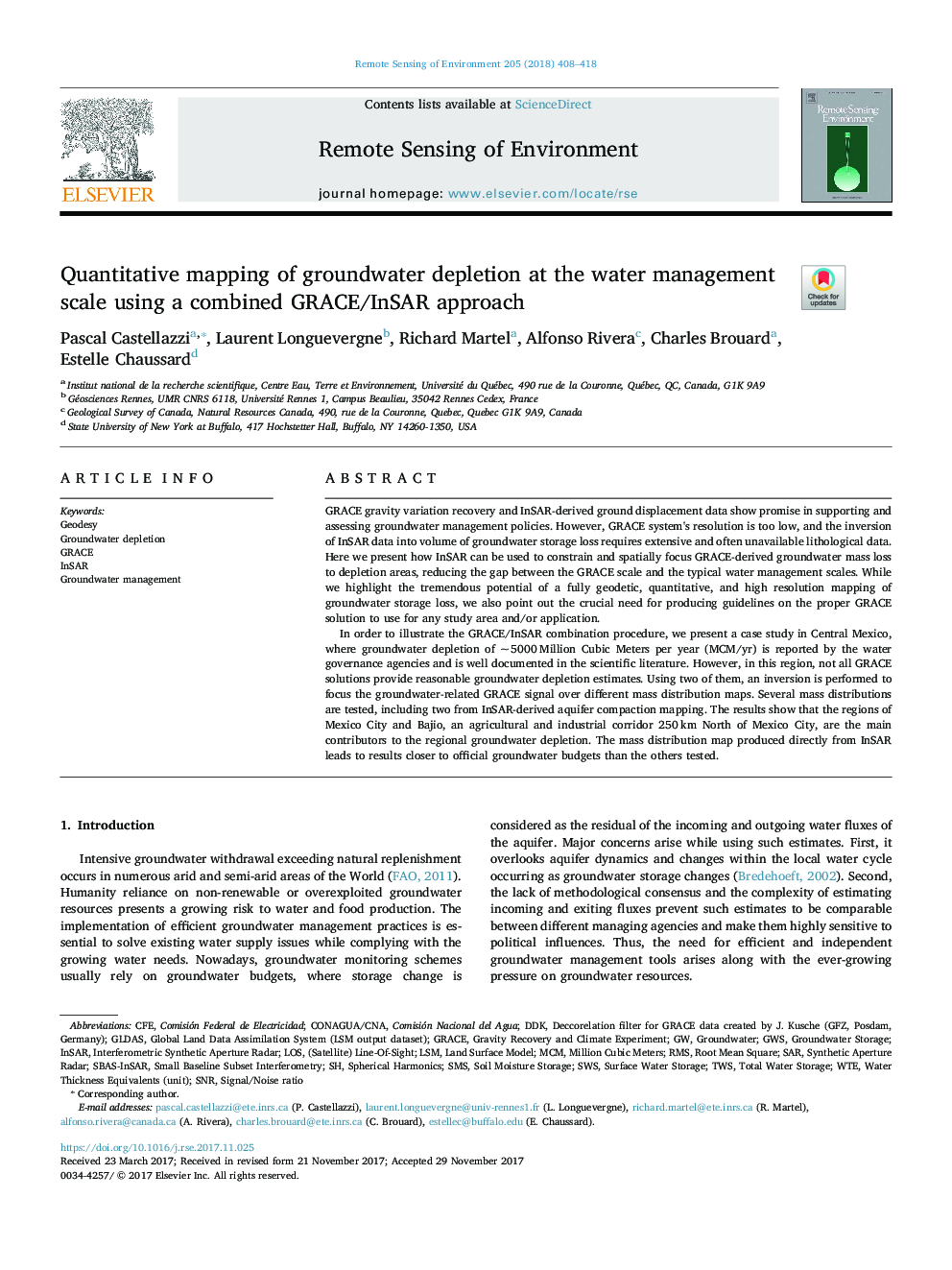| Article ID | Journal | Published Year | Pages | File Type |
|---|---|---|---|---|
| 8866809 | Remote Sensing of Environment | 2018 | 11 Pages |
Abstract
In order to illustrate the GRACE/InSAR combination procedure, we present a case study in Central Mexico, where groundwater depletion of ~Â 5000Â Million Cubic Meters per year (MCM/yr) is reported by the water governance agencies and is well documented in the scientific literature. However, in this region, not all GRACE solutions provide reasonable groundwater depletion estimates. Using two of them, an inversion is performed to focus the groundwater-related GRACE signal over different mass distribution maps. Several mass distributions are tested, including two from InSAR-derived aquifer compaction mapping. The results show that the regions of Mexico City and Bajio, an agricultural and industrial corridor 250Â km North of Mexico City, are the main contributors to the regional groundwater depletion. The mass distribution map produced directly from InSAR leads to results closer to official groundwater budgets than the others tested.
Keywords
InSARSNRTotal water storageTWSGLDASRMSSBAS-InSARSWSMCMGWSGravity Recovery and Climate ExperimentDDKWTECFESARSpherical harmonicsGroundwaterLosGroundwater depletiongroundwater storageSoil moisture storageSynthetic aperture radarInterferometric synthetic aperture radarGRACEGeodesyLSMLand surface modelGroundwater managementroot mean squaresignal/noise ratioSMS
Related Topics
Physical Sciences and Engineering
Earth and Planetary Sciences
Computers in Earth Sciences
Authors
Pascal Castellazzi, Laurent Longuevergne, Richard Martel, Alfonso Rivera, Charles Brouard, Estelle Chaussard,
